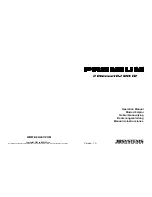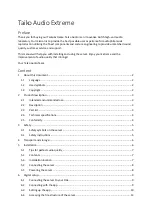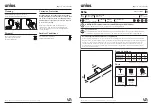
n
Average
x
Dev
S
n
i
i
∑
1
2
)
(
.
td
=
−
=
Wherein,
x
i
is the amplitude of the
ith point, Average is the waveform average
value, and
n is the number of points being measured.
10.1.5
Other Parameters
•
Positive Slew Rate: On the rising edge, first calculate the difference between the
high value and the low value, then use the difference to divide the
corresponding time value to obtain the positive slew rate.
•
Negative Slew Rate: On the falling edge, first calculate the difference between
the low value and the high value, then use the difference to divide the
corresponding time value to obtain the negative slew rate.
•
Area: indicates the area of the whole waveform within the screen. The unit is V*s.
The area of the waveform above the zero reference (namely the vertical offset) is
positive, and the area of the waveform below the zero reference is negative. The
area measured is the algebraic sum of the area of the whole waveform within the
screen.
•
Period Area: indicates the area of the first period of waveform on the screen.
The unit is V*s. The area of the waveform above the zero reference (namely the
vertical offset) is positive, and the area of the waveform below the zero reference
is negative. The area measured is the algebraic sum of the whole period area.
10.2
Select the Measurement Item
In the Measure menu, click or tap Horizontal, Vertical, or Other to go to the desired
menu. You can also slide to select the measurement item to enter the corresponding
interface, as shown in
. Click or tap any of
the measurement items to enable the measurements. This series allows you to enable
measurements of up to 14 items at the same time.
TIP
You can also refer to
to enable all measurements.
•
Vertical: Vmax, Vmin, Vpp, Vtop, Vbase, Vamp, Vupper, Vmid, Vlower, Vavg,
VRMS, Per. VRMS, Overshoot, Preshoot, Area, Per.Area, and AC.RMS.
Measurements
Copyright ©RIGOL TECHNOLOGIES CO., LTD. All rights reserved.
HDO1000 User Guide
141















































